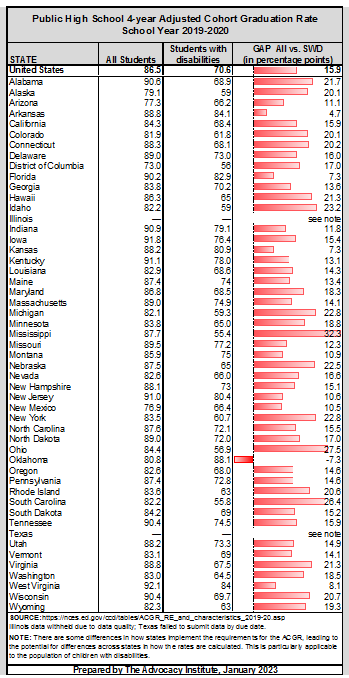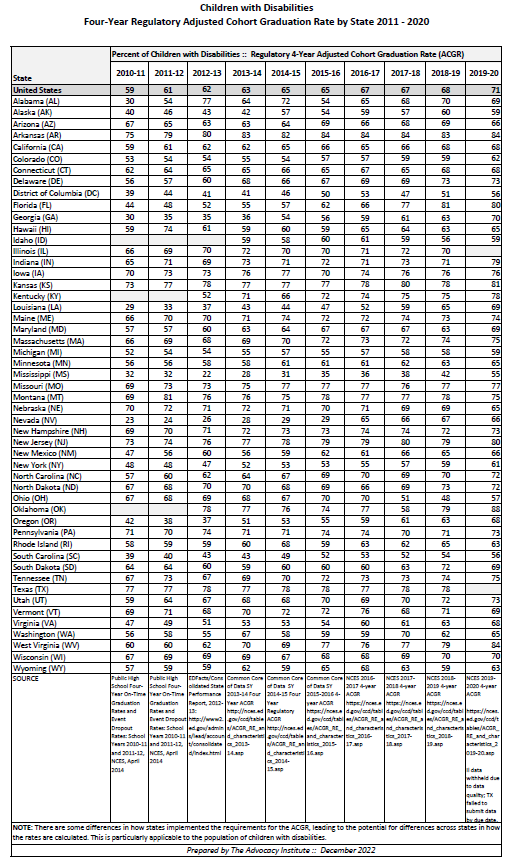State-by-State Graduation Rates for Students with Disabilities:: 2019-2020
States are required to report annually to the U.S. Dept. of Education (ED) the “4-Year Adjusted Cohort Graduation Rate (ACGR)” for all students and separately for many student subgroups, including students with disabilities. The 4-Year ACGR for the 2019-2020 school year was released on December 19, 2022.
ABOUT THE ACGR: The ACGR was put into place in 2008 via Federal regulations to help bring uniformity to the way states calculate the high school graduation rate. Reporting began with the 2010-2011 school year. The ACGR was subsequently included in the Every Student Succeeds Act (ESSA) passed in 2015. It was also the subject of non-regulatory guidance released by ED in January 2017.
States are to report only those students who graduated with a “regular high school diploma” in four (or fewer) years. ESSA defines a “regular high school diploma” as the “standard high school diploma awarded to the preponderance of students in a State that is fully aligned with the State’s standards.”
The table below provides the GAP between all students and students with disabilities in 2019-20 by state. (Keep in mind that the GAP would be larger if it were possible to compare students with disabilities to those without disabilities.)
Download the chart (PDF)

The chart below shows the performance of students with disabilities over the ten years since ACGR reporting began. Download the chart (PDF)

See also:
State-by-state Graduation Rates for Students with Disabilities:
2018-2019
2017-2018
2016-2017
2015-2016